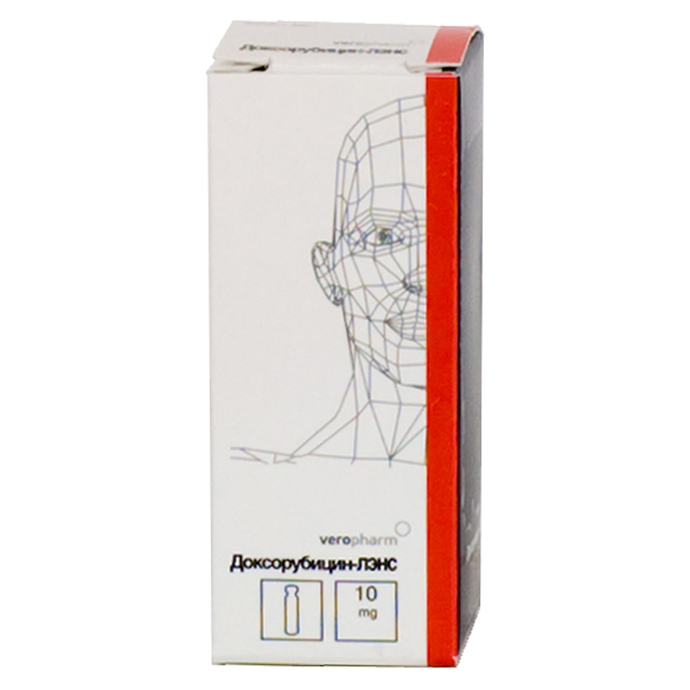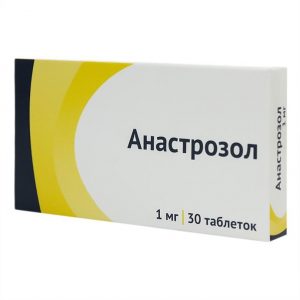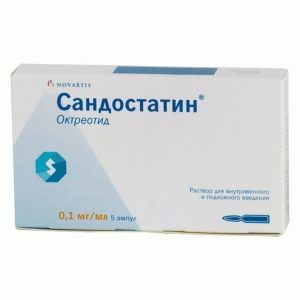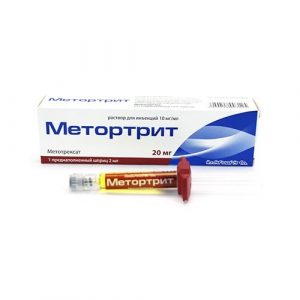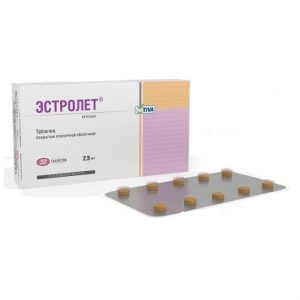Description
Latin name
DOXORUBICIN-LANS
Release form
Lyophilisate for solution for intravascular and intravesical administration of
in vials of 10 mg and 50 m g.
Packing
1 pc
Pharmacological action of
Antitumor antibiotic of the anthracyclin variety, anthracyclides, anthracyclines, and anthracyclines. caesius. It has antimitotic and antiproliferative effects. The mechanism of action is the interaction with DNA, the formation of free radicals and direct effects on cell membranes with the suppression of nucleic acid synthesis. Cells are sensitive to the drug in S and G2 phases.
Indications
Breast cancer, small cell lung cancer, mesothelioma, esophageal cancer, gastric cancer, primary hepatocellular cancer, insulinoma, carcinoid, head and neck cancers, thyroid cancer, malignant thymoma, ovarian cancer, germ cancer glands, bladder cancer (treatment and prevention of relapse after surgery), endometrial cancer, cervical cancer, uterine sarcoma, soft tissue sarcoma, Ewing’s sarcoma, osteogenic sarcoma, rhabdomyosarcoma, neuroblastoma, Wilms tumor, Kaposi ² ¢s sarcoma in AIDS, acute lymphoblastic leukemia, acute myeloid leukemia, chronic lymphocytic leukemia, Hodgkin ² ¢s disease, non-Hodgkin ² ¢s lymphomas, multiple myeloma.
Contraindications
– Hypersensitivity to doxorubicin or other components of the drug, as well as to other anthracyclines and anthracendiones. – Pregnancy and lactation.
– Intravenous administration is contraindicated for: severe myelosuppression, severe liver failure, severe heart failure and arrhythmias, recent myocardial infarction, previous therapy with other anthracyclines or anthracendion in total doses, acute viral infections (including chickenpox and varicella )
– Introduction to the bladder is contraindicated in: invasive tumors with penetration into the bladder wall, urinary tract infection, inflammation of the bladder, hematuria.
Caution Patients with risk factors for cardiotoxicity, patients who have previously received intensive chemotherapy, children, elderly patients, patients with obesity, patients with tumor bone marrow infiltration (may require a reduction of 3 starting doses or an increase in dose intervals) as part of combination antitumor therapy as well as in combination with radiation or other antitumor therapy, patients with impaired liver function, patients with gastric ulcer and duodenal ulcer intestines (with intraarterial administration of doxorubicin).
Use during pregnancy and lactation
Doxorubicin is contraindicated during pregnancy. If necessary, use during lactation should stop breastfeeding.
Women of childbearing age should use reliable methods of contraception when using doxorubicin.
In experimental studies, the teratogenic and embryotoxic effects of doxorubicin have been established.
Special instructions
Use with caution in patients with heart disease (including a history of), chicken pox (including recent or after contact with patients), herpes zoster, other acute infectious diseases, gout or nephrolithiasis (including history), as well as in patients with mediastinal radiation therapy or simultaneously receiving cyclophosphamide.
During the treatment period, regular monitoring of the peripheral blood picture, laboratory parameters of liver function, ECG and ultrasound of the heart (with determination of the ejection fraction of the left ventricle) is necessary. When the number of leukocytes less than 3500 / μl and platelets less than 100 000 / μl, the dose of doxorubicin is reduced by 50%.
Cases of the development of severe, life-threatening arrhythmias are described immediately or within a few hours after the administration of doxorubicin.
Do not recommend vaccinating patients and their families.
Doxorubicin may cause urine to stain red within 1 2 days after administration.
Experimental studies have established the carcinogenic and mutagenic effects of doxorubicin.
Composition
1 bottle contains:
Active ingredient: doxorubicin hydrochloride in terms of 100% substance – 10 mg
Excipient: mannitol (mannitol) – 40 mg.
Drug Interaction
Doxorubicin may increase the toxicity of other antitumor agents, especially myelotoxicity and toxicity to the gastrointestinal tract. With the simultaneous use of doxorubicin with other cytotoxic drugs that have potential cardiotoxicity (eg, fluorouracil and / or cyclophosphamide), as well as blockers of “slow” calcium channels (eg, verapamil), a more thorough monitoring of the course is required. Against the background of doxorubicin may increase the effects of hemorrhagic cystitis caused by cyclophosphamide and increase the hepatotoxicity of mercaptopurine. Streptozotocin increases the half-life of doxorubicin. Administration of paclitaxel before doxorubicin may lead to an increase in plasma concentrations of doxorubicin and / or its metabolites in plasma. This effect is minimal when administered doxorubicin before paclitaxel. Doxorubicin enhances irradiation-induced toxic effects on the myocardium, mucous membranes, skin and liver. Uricosuric anti-gout drugs increase the risk of nephropathy. Hepatotoxic drugs that impair liver function can lead to increased toxicity of doxorubicin. Co-administration with progesterone enhances doxorubicin-induced neutrophil and thrombocytopenia. Doxorubicin cannot be mixed with other drugs. Contact with alkaline solutions should be avoided as this may lead to hydrolysis of doxorubicin. Pharmaceutically incompatible with heparin, dexamethasone, hydrocortisone, sodium succinate, aminophylline, cephalothin, fluorouracil and other antitumor drugs. When co-administered with live viral vaccines, it is possible to intensify the process of replication of the vaccine virus, to increase its side / adverse effects and / or to reduce the production of antibodies in the patient’s body in response to the introduction of the vaccine.
overdose
Acute overdose of doxorubicin can lead to severe myelosuppression (mainly to leukopenia and thrombocytopenia), to toxic effects from the gastrointestinal tract, cause acute heart damage. The antidote to doxorubicin is unknown. In case of overdose, symptomatic therapy is recommended.
Storage conditions
At a temperature not exceeding 8 ° C, out of the reach of children.
The Expiration of
is 3 years. Do not use after the expiry date stated on the packaging.
Deystvuyuschee substances
doxorubicin
Pharmacy terms
Prescription
Dosage form
Dosage form
solution for infusion
